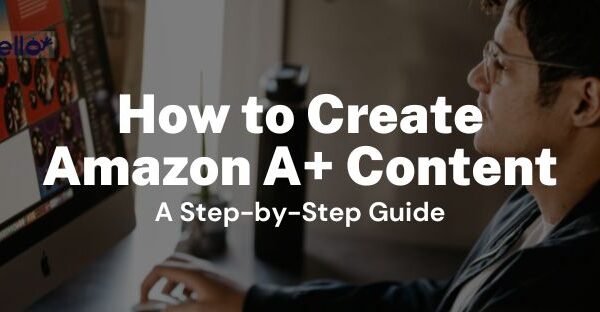Auto-target segmentation: A fresh look at your sponsored products auto campaigns.
Before we start, let’s refresh on what exactly an Automatic Campaign is. Automatic Campaigns are when Amazon determines when to show your product ad based on keywords found in the title, description, and other elements of your product listing. Automatic Campaigns are simple to create. They don’t require keyword bidding homework or keyword research to find the best keywords. Automatic campaigns assist you in identifying long-tail search terms for future ads that are tough to find even with the most powerful Keyword Research Tools.
If you’ve been advertising on Amazon for a while, you may have noticed that in November 2018, Amazon modified the structure of their Automatic campaigns. Don’t worry if you didn’t know this; this post will teach you everything you need to know about the change and how it affects you. Continue reading.
The 4 Auto-Targets in Amazon Ads
In November 2018, Amazon introduced the four targeting match types: close match, loose match, substitutes, and complements.
- Close Match – Ads are shown to users using search terms that are closely related to your products.
- Loose Match – Ads are shown to users whose search terms are loosely related to your products
- Complements – Ads are shown to users who viewed pages that are complements of your products
- Substitutes – Ads are shown to users who viewed pages that are substitutes for your products
If you sell dog beds, a tight match search term might be “pug bed,” whereas a loose match search term might be “cat bed.” Because Amazon’s algorithms will take seed keywords from your listing, having a well-written listing goes a long way in influencing the effectiveness of this targeted group.
The ‘Substitutes’ targeted group is used to match products that are comparable to or compete with yours, whereas the ‘Complements’ group is used to match products that compliment your product. A dog bowl is an example of a compliment from our dog bed example.
What is Auto Campaign Segmentation?
Today, we’re going to discuss a new type of automatic sponsored product advertising plan that you may not have heard of before. Auto campaign segmentation has been around for a long time but has never been extensively popular or acknowledged.
To put it another way, four auto campaigns with the same SKU and only one match type are created.
So essentially, one campaign with a close match, one campaign with a loose match, and one campaign with substitute complements.
You should try this method if you have highly relevant cross-sale products (for example, a Damascus knife set as the main product and a whetstone as a cross-sale product). You can get creative and try different combinations.
But Do We Need Auto-Segmentation?
Yes, we need auto campaign segmentation because navigating through Amazon Ads is a nightmare right now.
We’ve all seen it. During the launch period, one of the four-match types may be displayed more frequently than the others. CM is receiving all of the traffic and converting at a high rate, while LM, S, and C are falling behind.
Furthermore, we cannot individually distribute the budget to each ad kind; we can simply change the maximum CPC and hope that Amazon allocates more financing to the most efficient match type.
Keep in mind that while ad efficiency may be your top concern, it isn’t necessarily Amazon’s top priority.
As if that wasn’t complicated enough, all four ad formats are combined in placement statistics. We are unable to distinguish between how close match, loose match, substitute, and complement clicks are displayed at the top of the search, on product pages, and throughout the search.
We need a solution, and auto campaign segmentation is the answer.
The Benefits of Auto Campaign Segmentation?
There are 2 main benefits to Auto Campaign Segmentation
Take charge of your spending across automatic targets groups
When it comes to optimising for bid placements, segmenting your auto campaigns will give you the upper hand.
One of the hallmarks of AI-based algorithms is that they respond more positively to early data points, rewarding those targets with early movement in the form of impressions, clicks, or sales with even more exposure and, as a result, a chance to perform.
You should start seeing data on impressions, clicks, spending, orders, and ACoS after a few weeks of running your campaign.
Let’s imagine a loose match gets 33 clicks, a conversion rate of 23%, and a 13 per cent ACOS at the top of the search with a CPC of 0.55ct. Product pages receive 19 clicks, resulting in a 33 per cent ACOS and a 7% conversion rate at an average CPC of 0.43ct.
You may now go ahead and set the bid to 0.15ct in your segmented auto campaign, with a bid optimizer placed on top of the search alone, potentially being displayed more often for the efficient performing placement.
That would not be achievable without segmentation because ratios would blend with numerous match types.
You may always go in and change the individual bids for each target group if the algorithm did not produce any movement or, worse, caused the wrong kind of movement.
Harvesting The Right Keywords
Another strategy to stay ahead of the curve is to build a list of negative exact keywords that aren’t relevant to your product, followed by a list of competitor ASINs that aren’t positioned similarly to yours. In other words, different price ranges, different product varieties, different set sizes, different colours, and so on.
Use these negative lists when uploading your auto campaigns to prevent weeds from sprouting. This will set up the starting conditions for precise and tight auto-targeting.
Of course, don’t go overboard with the precision. Search phrases or product targets that are irrelevant and inexpensive but generate a lot of impressions and click-through-rate can improve the total campaign score. You must base your decision on whether or not your campaign is on track.
The Potential Drawbacks of Auto Campaign Segmentation
Let’s now look at the disadvantages of this segmentation technique. Overcomplicating your existing campaign structures and distributing their strength too thin are the two main negatives.
If you have hundreds to thousands of SKUs, you probably don’t want to complicate your organisation any further. If you still want to pursue this technique, we recommend starting with your top 3-5 goods and seeing if the segmentation strategy produces positive results.
Another disadvantage is that spreading your ad budget across too many ads may dilute the effectiveness of your auto campaigns. Consider a laser that is focused in four different places rather than just one. It is preferable to concentrate the laser’s power into a single concentrated area.
If you have more money to spend on a campaign, it will collect data more quickly. If you’re on a restricted budget, concentrate all of your firepowers into one or two auto campaigns.
To prevent falling prey to the potential negatives, know your present auto-target approach to identify whether auto-segmentation is ideal for you.
Final Thoughts
If you want well-optimized auto campaigns, the new auto-campaigns are the way to go. While we don’t recommend suspending any of your existing auto-campaigns that are performing well, it makes sense to create new ones for those that aren’t. Take advantage of Amazon’s increased data and improved targeting!
Keep in mind that the most important thing is to keep your structure simple and effective. You’ll have to assess whether the segmentation technique improves the simplicity of your analysis and decision-making in your own case.


